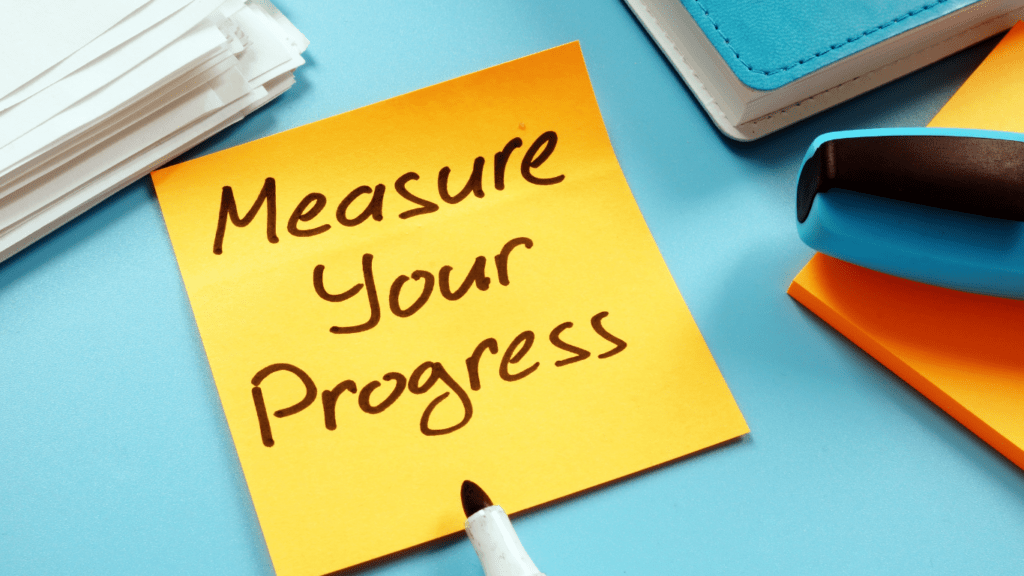Measuring your progress for your goals is part of the SMART goal-setting method and a very wise way to ensure you reach your goals. After all, you won’t know if you’re making progress or gaining on your goal unless you have a way to measure it. When progress is measurable, you can track how far you’ve come, keep focused, and stay motivated. You can also celebrate the small milestones along the way as you get closer to achieving your goals. To measure the progress of your goals, you will need a set of criteria by which to measure.
Measuring Your Progress The SMART Way
Similar to the “Specific” step in SMART goals, you will need to ask yourself a few questions about your goal as criteria for measuring your progress:
-
- How many? Or how much? This refers to progress as an indicator of your specific goal’s success.
- What is the indicator of progress? This signifies how you decide to track the progress you have made.
- How will you know when it’s accomplished?
These questions and their answers vary depending on the type of goal. The progress indicator may be in gross sales if it’s a business goal. For health goals, it may be the number of pounds lost per week to get to a healthier weight. Tracking how far you’ve come within the goal is important because it keeps you focused on your ultimate goal. You can build motivation by celebrating small milestones on your track to progress along the way!
Examples Of Measurable Goals
Goals need to be measurable so that you can find tangible, concrete evidence. You should be able to identify what will happen when you achieve the goal. Aim for a metric or quantity if you can. Quantifying goals makes it easier to track.
Using the above examples, these are examples of how those goals are measured:
- Business Goal – The goal is: “I will build brand awareness through social media to increase gross profits to 20% this month.” The quantity of measurement and the indicator is the profit increase compared to previous months.
- Health Goal – Let’s say your goal is to lose 10 pounds by exercising more. Specifically, your stated goal is: “I will go to the gym to work out for 45 minutes every weekday morning before work in order to lose 2 pounds per week.” Not only is this goal specific and clearly stated, but we also have the quantity of measurement for the goal, which is two pounds per week. In this example, the indicator of measurement is the scale.
Final Tips For Measuring Your Progress
If you are having difficulty measuring your goals, try using a goal-tracking app. They can be helpful for tracking your progress, especially if your goals are time-based. Keeping a record of all of your actions in a journal or Excel spreadsheet is also beneficial for tracking your progress. Use a calendar or planner to track your checklist of tasks and track your progress. Add your deadlines for your milestones so that you stay on track for each step until you achieve your goal. You can even use task management or project management software if you want to truly be efficient.
Putting the SMART goal-setting method to use is proven to produce a higher success rate in achieving your goals. Measuring your goals is an important part of this process. Tracking your progress gives you the motivation and stronger focus to keep moving forward until you reach your goal.
What are some of the measurable goals you are working toward this year?

